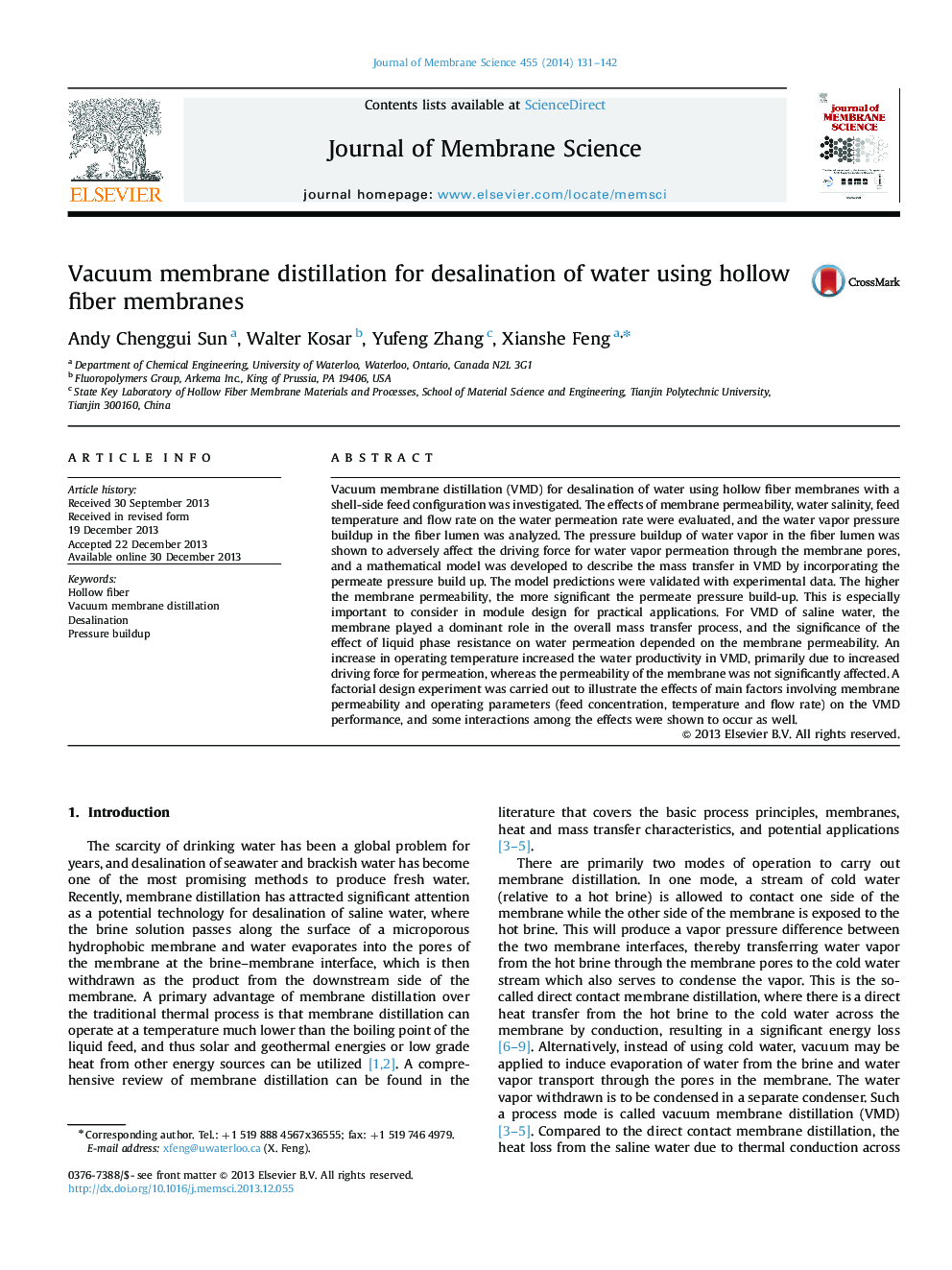| Article ID | Journal | Published Year | Pages | File Type |
|---|---|---|---|---|
| 633892 | Journal of Membrane Science | 2014 | 12 Pages |
•Permeate pressure buildup in hollow fibers with shell side feed was modeled.•Significance of boundary layer effect on VMD depends on membrane permeability.•There was a maximum permeation rate when permeate pressure buildup is significant.
Vacuum membrane distillation (VMD) for desalination of water using hollow fiber membranes with a shell-side feed configuration was investigated. The effects of membrane permeability, water salinity, feed temperature and flow rate on the water permeation rate were evaluated, and the water vapor pressure buildup in the fiber lumen was analyzed. The pressure buildup of water vapor in the fiber lumen was shown to adversely affect the driving force for water vapor permeation through the membrane pores, and a mathematical model was developed to describe the mass transfer in VMD by incorporating the permeate pressure build up. The model predictions were validated with experimental data. The higher the membrane permeability, the more significant the permeate pressure build-up. This is especially important to consider in module design for practical applications. For VMD of saline water, the membrane played a dominant role in the overall mass transfer process, and the significance of the effect of liquid phase resistance on water permeation depended on the membrane permeability. An increase in operating temperature increased the water productivity in VMD, primarily due to increased driving force for permeation, whereas the permeability of the membrane was not significantly affected. A factorial design experiment was carried out to illustrate the effects of main factors involving membrane permeability and operating parameters (feed concentration, temperature and flow rate) on the VMD performance, and some interactions among the effects were shown to occur as well.
